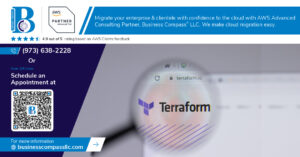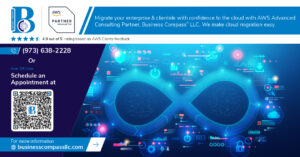Have you ever felt like your development team and business stakeholders are speaking different languages? 🗣️💼 You’re not alone. In the world of software development, miscommunication between technical and non-technical teams is a common frustration that can lead to costly errors, missed deadlines, and products that don’t quite hit the mark.
Enter Domain-Driven Design (DDD) – a powerful approach that bridges the gap between code and business logic. 🌉 By creating a shared language and aligning your codebase with real-world business concepts, DDD promises to revolutionize how we build and maintain complex software systems. But for many developers, the concept of DDD can seem overwhelming and abstract.
In this blog post, we’ll demystify Domain-Driven Design and show you how to implement its principles in your projects. From understanding the core concepts to refactoring existing code, we’ll guide you through the process of making your software speak the same language as your business. Get ready to transform your development process and create more intuitive, maintainable, and business-aligned applications!
Understanding Domain-Driven Design (DDD)
Core concepts of DDD
Domain-Driven Design (DDD) revolves around several key concepts that form its foundation:
- Ubiquitous Language: A shared vocabulary between developers and domain experts, ensuring clear communication and understanding.
- Bounded Contexts: Clearly defined boundaries within which a specific domain model applies.
- Entities and Value Objects: Distinguishing between objects with unique identities (entities) and those defined by their attributes (value objects).
- Aggregates: Clusters of related objects treated as a single unit for data changes.
- Domain Events: Capturing significant occurrences within the domain.
Benefits of implementing DDD
Implementing Domain-Driven Design offers numerous advantages:
- Improved communication between technical and non-technical team members
- More maintainable and flexible codebase
- Better alignment between software design and business goals
- Enhanced ability to handle complex domains
- Easier refactoring and evolution of the system over time
Common misconceptions about DDD
Despite its benefits, DDD is often misunderstood. Let’s clarify some common misconceptions:
- DDD is only for large, complex systems: While particularly beneficial for complex domains, DDD principles can be applied to projects of any size.
- DDD requires a complete overhaul of existing systems: DDD can be incrementally adopted, gradually refactoring and improving specific areas of your codebase.
- DDD is a rigid set of rules: It’s actually a flexible approach that can be adapted to suit your project’s specific needs.
Now that we’ve covered the fundamentals of Domain-Driven Design, let’s explore how it helps align business and technical language in software development.
Aligning Business and Technical Language
The importance of ubiquitous language
Ubiquitous language is the cornerstone of effective Domain-Driven Design (DDD). It’s a shared vocabulary that bridges the gap between business experts and developers, ensuring everyone speaks the same language when discussing the domain. By using consistent terminology throughout the project, from conversations to documentation and code, teams can:
- Reduce misunderstandings and miscommunications
- Improve collaboration between technical and non-technical stakeholders
- Enhance the accuracy of domain models and software implementations
Creating a shared vocabulary
To establish a shared vocabulary:
- Identify key domain concepts and terms
- Define each term clearly and unambiguously
- Document the vocabulary in a glossary or wiki
- Encourage all team members to use the agreed-upon terms consistently
Regularly review and refine the shared vocabulary as the project evolves, ensuring it remains relevant and accurate.
Bridging the communication gap between stakeholders
Implementing ubiquitous language helps bridge the communication gap between various stakeholders by:
- Facilitating clearer discussions about domain concepts
- Enabling non-technical stakeholders to understand and contribute to technical discussions
- Empowering developers to communicate more effectively with business experts
By aligning business and technical language, teams can create more accurate domain models and develop software that truly reflects the business needs. This alignment is crucial for successful DDD implementation and helps ensure that the final product meets the expectations of all stakeholders involved.
Modeling the Domain
Identifying bounded contexts
Bounded contexts are a crucial concept in Domain-Driven Design, serving as clearly defined boundaries within which a specific domain model applies. To identify bounded contexts:
- Analyze business processes
- Look for linguistic boundaries
- Consider organizational structures
- Examine existing systems
By defining these contexts, you create a natural separation of concerns, allowing different parts of your system to evolve independently.
Defining entities and value objects
In DDD, entities and value objects are fundamental building blocks of your domain model:
- Entities: Objects with a unique identity that persists over time
- Value objects: Immutable objects defined by their attributes
When modeling your domain, carefully consider which concepts should be entities (e.g., a Customer) and which should be value objects (e.g., an Address). This distinction helps create a more accurate and maintainable model.
Creating aggregates and aggregate roots
Aggregates group related entities and value objects, with one entity designated as the aggregate root. This root serves as the entry point for all operations within the aggregate. When designing aggregates:
- Identify clusters of related objects
- Determine the primary entity (aggregate root)
- Define clear boundaries and access rules
Properly structured aggregates ensure data consistency and simplify your domain model.
Implementing domain events
Domain events represent significant occurrences within your domain. They allow different parts of your system to react to changes without tight coupling. To implement domain events:
- Identify important state changes
- Create event classes
- Implement event publishers and subscribers
By leveraging domain events, you can create more flexible and extensible systems that accurately reflect real-world business processes.
Implementing DDD in Your Codebase
Structuring your project around the domain
When implementing Domain-Driven Design (DDD) in your codebase, the first step is to structure your project around the domain. This approach ensures that your code reflects the business logic and concepts inherent in your domain. Here are key strategies to achieve this:
- Organize packages/modules by bounded contexts
- Create separate layers for domain, application, and infrastructure
- Use a folder structure that mirrors your domain model
By following these principles, you create a codebase that’s easier to navigate and understand, directly mapping to your business domain.
Writing expressive and self-documenting code
In DDD, your code should speak the language of the domain. This means using:
- Descriptive method and variable names
- Domain-specific terminology in your code
- Clear and concise comments where necessary
This approach makes your code more readable and maintainable, reducing the need for extensive documentation.
Using domain-specific types and enums
To further align your code with the domain, leverage:
- Custom value objects for domain concepts
- Enums to represent fixed sets of domain values
- Domain-specific exceptions for error handling
These practices enhance type safety and make your code more expressive of the domain it represents.
Implementing domain services
Domain services encapsulate complex business logic that doesn’t naturally fit within entities or value objects. When implementing them:
- Keep services stateless
- Focus on operations that involve multiple domain objects
- Use interfaces to define service contracts
By properly implementing domain services, you create a clean separation of concerns and improve the overall architecture of your system.
Refactoring Existing Code to DDD Principles
Identifying domain concepts in legacy code
When refactoring existing code to align with Domain-Driven Design (DDD) principles, the first step is to identify domain concepts within your legacy codebase. This process involves:
- Code analysis: Carefully examine your existing code to identify business logic and domain-specific operations.
- Domain expert collaboration: Work closely with domain experts to understand the underlying business concepts.
- Naming conventions: Look for class and method names that reflect domain terminology.
- Data structures: Analyze data models and database schemas to uncover domain entities.
Gradually introducing DDD patterns
Once you’ve identified domain concepts, start introducing DDD patterns incrementally:
- Create a ubiquitous language: Begin by establishing a shared vocabulary between developers and domain experts.
- Implement bounded contexts: Divide your application into distinct contexts with clear boundaries.
- Refactor to aggregates: Group related entities and value objects into cohesive units.
- Introduce domain events: Implement events to represent significant changes in the domain.
Measuring the impact of DDD refactoring
To ensure your refactoring efforts are yielding positive results, it’s crucial to measure their impact:
- Code maintainability: Use metrics like cyclomatic complexity and coupling to assess code quality improvements.
- Development velocity: Track the team’s ability to implement new features and fix bugs more efficiently.
- Business alignment: Gather feedback from stakeholders on how well the refactored code reflects business processes.
By following these steps, you can successfully refactor your existing codebase to incorporate DDD principles, leading to improved code quality and better alignment with business needs. Next, we’ll explore the tools and techniques that can further enhance your DDD implementation.
Tools and Techniques for Effective DDD
Event storming for collaborative domain modeling
Event storming is a powerful workshop-based technique that brings together domain experts, developers, and other stakeholders to collaboratively model complex business domains. This approach aligns perfectly with DDD principles by:
- Fostering shared understanding
- Identifying key domain events
- Uncovering bounded contexts
- Highlighting aggregate roots
To conduct an effective event storming session:
- Use a large, open space with plenty of wall space
- Provide sticky notes in various colors
- Encourage all participants to contribute freely
- Start by identifying domain events and placing them on a timeline
- Gradually add commands, aggregates, and policies
Using domain storytelling to capture business processes
Domain storytelling complements event storming by focusing on the narrative flow of business processes. This technique helps teams:
- Visualize end-to-end processes
- Identify key actors and their interactions
- Uncover hidden assumptions and requirements
- Refine the ubiquitous language
To implement domain storytelling:
- Gather a diverse group of stakeholders
- Use simple symbols to represent actors, work objects, and activities
- Create a visual story of the business process
- Iterate and refine the story with input from all participants
Leveraging CQRS and event sourcing with DDD
Command Query Responsibility Segregation (CQRS) and event sourcing are advanced patterns that work well with DDD. These techniques help manage complex domains by:
- Separating read and write models
- Capturing all changes as a series of events
- Enabling powerful audit trails and historical views
- Supporting scalability and performance optimization
When implementing CQRS and event sourcing in a DDD context:
- Align event streams with aggregate boundaries
- Use domain events to communicate between bounded contexts
- Design commands and queries based on use cases identified during domain modeling
By utilizing these tools and techniques, teams can effectively implement DDD principles, resulting in more robust and maintainable software systems that closely align with business needs.
Overcoming Common DDD Challenges
Dealing with complex domains
When implementing Domain-Driven Design (DDD) in complex domains, it’s crucial to break down the complexity into manageable parts. Start by identifying subdomains and creating a strategic domain map. This visual representation helps in understanding the relationships between different parts of the system.
Key strategies for managing complex domains include:
- Collaborative modeling sessions
- Iterative refinement of the domain model
- Use of bounded contexts to isolate complexity
- Regular knowledge-sharing sessions with domain experts
Managing multiple bounded contexts
Bounded contexts are a fundamental concept in DDD, helping to manage complexity by dividing the domain into discrete, manageable units. When dealing with multiple bounded contexts, focus on:
- Clearly defining context boundaries
- Establishing communication patterns between contexts
- Implementing anti-corruption layers to protect context integrity
- Using context mapping to visualize relationships
Balancing technical debt and domain modeling
Striking the right balance between addressing technical debt and refining your domain model is crucial. Prioritize modeling efforts that align with business value and impact. Regularly assess your codebase and domain model, refactoring incrementally to maintain a clean and expressive design.
Ensuring team buy-in and consistent application of DDD
To achieve successful DDD implementation, fostering team alignment and commitment is essential. Organize workshops to educate team members on DDD principles and benefits. Establish coding standards and review processes that reinforce DDD practices. Encourage open communication and collaboration between developers and domain experts to maintain a shared understanding of the domain.
Domain-Driven Design offers a powerful approach to software development, bridging the gap between business requirements and technical implementation. By emphasizing a shared language and deep understanding of the problem domain, DDD enables teams to create more robust, maintainable, and scalable systems. From modeling the domain to implementing DDD principles in your codebase, this methodology provides a framework for tackling complex software challenges.
As you embark on your DDD journey, remember that it’s not just about following a set of rules, but about fostering a mindset that values collaboration, continuous learning, and adaptability. By embracing DDD principles and overcoming common challenges, you can create software that truly reflects the needs of your business and speaks the same language as your code. Start small, experiment, and gradually incorporate DDD practices into your development process to reap the long-term benefits of this powerful approach.



















